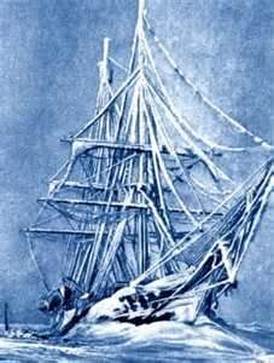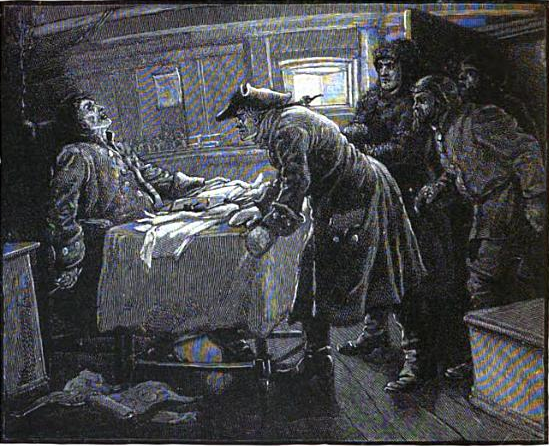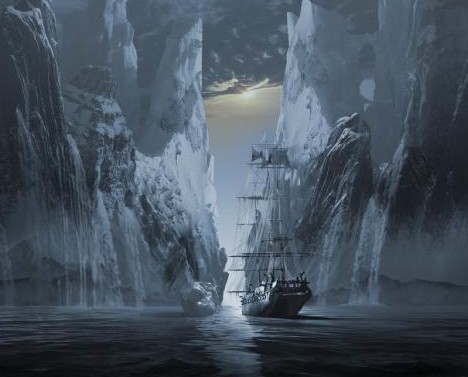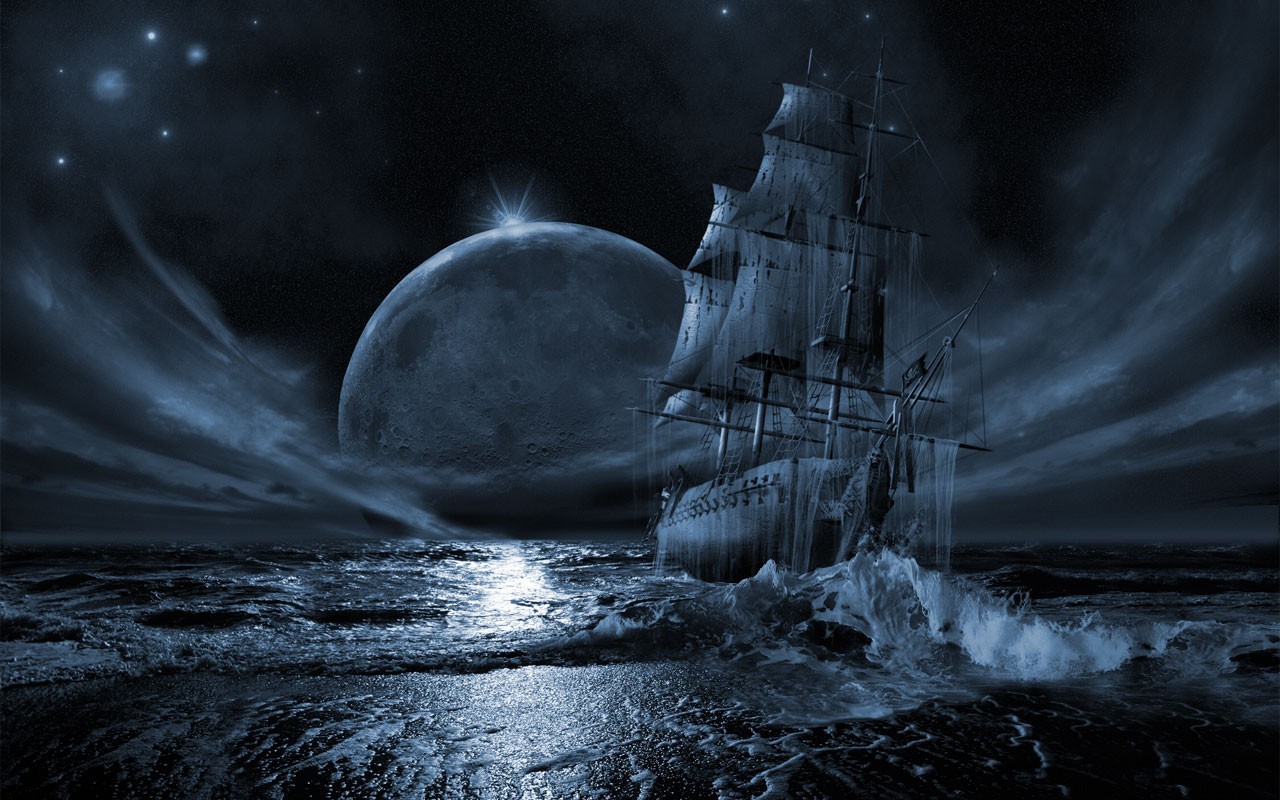It looks like you're using an Ad Blocker.
Please white-list or disable AboveTopSecret.com in your ad-blocking tool.
Thank you.
Some features of ATS will be disabled while you continue to use an ad-blocker.
12
share:

Gather 'round for a tale ye olde salty dogs!
The story of the ghostly and frozen sailing ship Octavius is an old yarn that contains much detail, yet some believe is only a legend. Whatever the truth, the story is worth retelling on this Halloween month.
It seems that the crew of the whaling ship Herald came upon the derelict Octavius, drifting with tattered sails still raised, off the west coast of Greenland on October 11, 1775.

When they boarded the ship the crew of the whaler was shocked to find its entire crew frozen to death. Some appeared to have died quickly in the midst of performing their routine chores. The captain, for example, was found in his cabin, seated at his desk with a pen in his hand. He was writing in his log when he died.

The last entry in the log book revealed that the Octavius had been adrift in this frozen state, high in the frozen arctic and with its ghost crew for 13 years.

The crew of the Herald was so abashed by what they found the sailors fled with only the Octavius log book in hand. It was said that the pages were so frozen that they slipped from the book bindings and only the first and last parts of the book were found intact when the book reached the Herald.
There was enough information in the surviving log to reveal that the Octavius left England on a long trip to the orient in 1762 and was returning home when disaster struck. It was thought that rather than take the long and perilous journey around the horn of South America, the captain made the fatal mistake of choosing to try to sail the legendary Northwest Passage. On its way the ship was captured in the ice and the crew froze to death.
That the derelict ship was found adrift off Greenland 13 years later means that the Octavius miraculously completed its strange journey without a working crew. If it really happened, the ship obviously broke free from the ice during summer months and continued drifting farther and farther east until eventually breaking free into the North Atlantic.
If the story is true, the Octavius was the first ship to ever successfully sail through the Northwest Passage! Though dead passengers do not count I believe for the record books.
One of the reasons the story remains on the list of tall tales among the old salts is that after this odd encounter, the Octavius drifted off after that, never to be seen again. Source
So that's the legend but that is not the end of the thread. I stumbled upon an author's site by the name of David Meyer. I never have heard of him but found his interest in the Octavius very cool.
A Possible Origin for the Octavius Ghost Ship?
Back in 1775, John Warrens was captain of the Try Again. One day, he came across a ghost ship named the Gloriana. He boarded it and discovered a frozen crew. The log-book indicated the ship had spent the last 13 years as a floating coffin. So, we’ve got a similar story about a crew being frozen for 13 years. The date in the log-book, November 11, 1762, is the same as in the Octavius story. And we’ve also got the captain taking the log-book as proof while leaving the rest of the ship behind.
I’ve spent the last few days tracking down the truth behind the legend. Yesterday, I was able to push the story back 1905, thanks to an entry in The Blue Adventure Book: A collection of Stirring Scenes and Moving Accidents from the World of Adventure. It tells a very similar story to that of the Octavius. Here’s more from me:
In the Gloriana tale, there’s no mention of the Northwest Passage. That, along with the Octavius moniker, appears to be a later addition. But otherwise, the stories are very similar. So, how much of the Gloriana ghost ship tale is accurate? Was it originally a work of fiction? If not, was it embellished over the years? Well, the Blue Adventure Book version was written in the first person. But no source is given. So, it could be a word-for-word copy of the original story or it could be a fictionalized entry.
An Earlier Source for the Octavius Ghost Ship?
Captain Warrens’ curiosity was so much excited, that he immediately leaped into the boat with several seamen, and rowed towards her. On approaching, he observed that her hull was miserably weatherbeaten, and not a soul appeared upon the deck, which was covered with snow to a considerable depth. He hailed her crew several times, but no answer was returned. Previous to stepping on board, an open port hole near the main chains caught his eye, and on looking into it, he perceived a man reclining back in a chair, with writing materials on a small table before him, but the feebleness of the light made every thing very indistinct.
After some digging, I managed to track down a much earlier source for this ghost ship story. There was a flurry of articles written about it in late 1828 and early 1829. The earliest version I’ve found so far was published on December 13, 1828 in a Philadelphia-based newspaper named The Ariel: A Literary and Critical Gazette. The article is entitled The Dangers of Sailing in High Latitudes. Here’s a taste:
The party, therefore, went upon deck, and having removed the hatchway, which they found closed, they descended to the cabin. They first came to the apartment which Captain Warrens had viewed through the port hole. A tremour seized him as he entered it. Its inmate retained his former position, and seemed to be insensible of strangers. He was found to be a corpse, and a green damp mould had covered his cheeks and forehead, and veiled his eye balls. He held a pen in his hand, and a log book before him, the last sentence in whose unfinished page thus, “11th Nov. 1762; We have been enclosed in the ice seventy days. The fire went out yesterday, and our master has been trying ever since to kindle it again but without success. His wife died this morning. There is no relief -”
Note that the time in the ice is seventy days here as opposed to seventeen days in the Blue Adventure Book version. Also, this version has Captain Warrens discovering the name of the ship (which is never given) after some detective work. The Blue Adventure Book version makes it clear that the name Gloriana is etched “in tall faded letters above her blistered stern.” But the stories are still almost identical in content. On a side note, this ghost ship story seems to get revived every few decades. It made another appearance around 1847, with similar articles being written as far apart as the Republican Advocate (Batavia, New York) and the South Australian Register.
Source
So, here’s where I stand. I’ve traced the Octavius ghost ship story back to 1828. That’s 77 years closer than I was yesterday. However, I’m still 53 years short of a primary source. If anyone has any pre-1828 information on this story, let me know. You might just help me solve a centuries-old ghost ship legend.
So that is the story of the olde Octavius, legend or truth, the story is intriguing.
Who knows, maybe one day Octavius will be found...

edit on 10/2/2013 by mcx1942 because: edit
Thank you for this story, I hadn't heard of this one before.
Ghost ship stories have always intrigued me and I enjoy hearing them.
I will have to go look up more stories now.
I will start with stories from the Great Lakes, there are mane from that region.
Ghost ship stories have always intrigued me and I enjoy hearing them.
I will have to go look up more stories now.
I will start with stories from the Great Lakes, there are mane from that region.
My pleasure, there are some interesting ghost ship stories out there. The Baychimo is another cool one. Apparently it has been sighted numerous times.
I had a hard time deciding between the two stories for a thread. This one is a bit more spooky because of the frozen passengers.
If true, it must of became cold tremendously fast for them to freeze in mid task. Also, who knows what kind of cargo it may of contained. Just the fact that there has been ghost ship sightings over the years, is such a sobering reminder of how extremely large the oceans are. A ship can get lost and float around aimlessly without possibly ever being found or sunk. Though I would imagine the sunken part is actually most if not all of the ghost ship stories actual demise.
If true, it must of became cold tremendously fast for them to freeze in mid task. Also, who knows what kind of cargo it may of contained. Just the fact that there has been ghost ship sightings over the years, is such a sobering reminder of how extremely large the oceans are. A ship can get lost and float around aimlessly without possibly ever being found or sunk. Though I would imagine the sunken part is actually most if not all of the ghost ship stories actual demise.
edit on 10/2/2013 by mcx1942 because: typo
new topics
-
1 Billion dollars
General Entertainment: 11 hours ago
top topics
-
Marvin Gabrion's sentence commuted by Biden
US Political Madness: 13 hours ago, 14 flags -
London Christmas Market BANS Word ‘Christmas’
Social Issues and Civil Unrest: 13 hours ago, 12 flags -
Christmas Dinner ??
Food and Cooking: 17 hours ago, 10 flags -
1 Billion dollars
General Entertainment: 11 hours ago, 6 flags -
Drones On Live Beach Cam New Jersey.
Aliens and UFOs: 16 hours ago, 4 flags -
Parker Solar Probe is about to Kiss the Sun
Space Exploration: 14 hours ago, 4 flags
12
